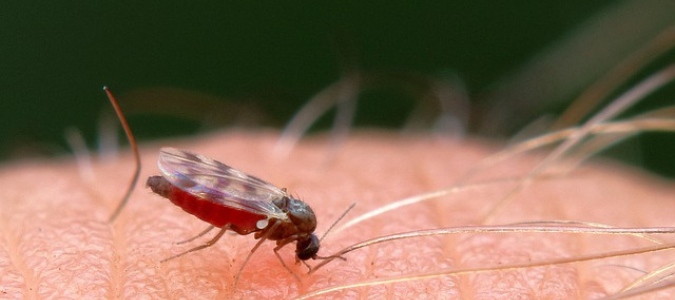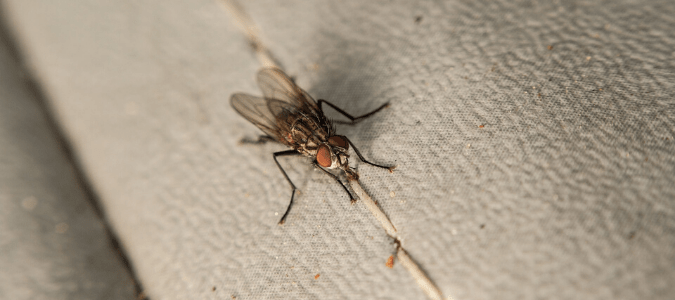Summertime is a great time to gather with friends and family outdoors. Your backyard is the perfect place to host a hangout, whether you are planning a cookout, a bonfire or a poolside party.
Homeowners know that time spent enjoying your backyard often comes at the price of annoying bug bites. These pests can range from simply frustrating to potentially dangerous. Mosquitoes carry dangerous diseases like Zika or the West Nile virus.
Yet not all bug bites are from mosquitoes. Many other bugs bother humans or even snack on our blood. While you are likely prepared to deal with mosquitoes, you may not know about other biting insects.
Biting midges are a concern for homeowners across the United States. You may know these tiny pests by their more popular name, no see ums. This nickname refers to how small these bugs are and how difficult it can be to stop them before they bite you.
No See Ums Versus Mosquitoes
Learning about the traits of no see ums vs. mosquitoes can help you figure out the mystery of which bug is biting you and your loved ones. These two pests are different in many ways, including their appearance, behavior, diet and habitats.
The Appearance of No See Ums versus Mosquitoes
Biting midges and mosquitoes are both a part of the fly family of bugs. Some people mistake biting midges for sand flies, but these are two different types of flies.
Because they are so small, it is difficult to tell no see ums apart from other biting flies. Adult biting midges measure around one-eighth of an inch. Adults have two wings, compound eyes, gray bodies and large abdomens.
On the other hand, mosquitoes have longer legs and thin wings. They may be the same color as biting midges, but their bodies are more elongated.
Since there are around 4,000 species of biting midges and 3,500 types of mosquitoes, these two bugs may vary in appearance.
Behaviors and Habitats of Biting Midges and Mosquitoes
The life cycle of no see ums takes place over two to six weeks. Larvae hatch and live either in water or on earth.
Mosquitoes lay their eggs on top of the water, where larvae hatch and pupae grow into adult mosquitoes.
Both mosquito and no see um larvae rely on moisture to mature. Mosquitoes are found throughout the United States. Biting midges are usually more of a problem in wetter areas and near large bodies of water, like rivers, lakes or swamps.
The Diets of Mosquitoes and No See Ums
While male mosquitoes enjoy plant nectar, female mosquitoes primarily feed on proteins from animal or human blood. Females need this blood so that their eggs can develop properly. Mosquitoes are drawn to their human prey by our bodies’ heat, carbon dioxide, lactic acid and sweat.
If you are dealing with mosquitoes, do not hesitate to contact a professional pest control company. Mosquitoes are not a problem you want to deal with on your own, as they can harm you, your family and your pets. Mosquitoes spread diseases that pose serious health risks to humans. Reach out to a mosquito control expert who can take care of your mosquito problem as soon as possible.
Mosquitoes and biting midges share a lot in common around their feeding habits. Both male and female no see ums feed on the pollen and nectar from plants, whereas females suck blood from mammals. The large white abdomens of biting midges turn red as they fill with human blood.
Unlike mosquitoes, female biting midges do not always need blood for their eggs to grow. Certain no see um species can use excess blood stored in their bodies for one set of eggs. However, they need to feed on human or animal blood before hatching another group of their eggs.
Neither male no see ums nor mosquitoes bite humans. Knowing when mosquitoes come out for the day can be helpful. Both female mosquitoes and biting midges are likely to bite their prey in the early morning or the early evening. Avoid going outdoors around dusk or dawn to minimize bug bites.
How Do You Prevent a No See Um Bug Infestation?
Since biting midges are difficult to spot in your home, it can be helpful to learn signs that these pests are inside your home.
There are a few tips and tricks homeowners can do to keep these biting bugs outside where they belong. Still, the best course of action is to contact a pest control professional who can protect your household from no see um bugs.
Signs of No See Um Bugs in Your Home
Like their name suggests, no see ums are hard to spot inside or outside. Since they feed on human blood, keep an eye out for bite marks on your skin. This is one of the most significant signs that no see um bugs are nearby.
It can be challenging to tell no see um bites from mosquito bites. Generally, mosquito bites result in large, itchy bumps. No see um bites are small, red and painful. If you scratch the bites on your skin too much, they may burst open and bleed.
Tips for Keeping No See Ums Out of Your Home
If you want to prevent an infestation of biting midges inside your home, start by installing mesh screens on your windows and doors. Because no see ums are so tiny, they can fit through most mosquito screens. You will want to buy mesh screens that are smaller than the typical regular size.
You can also make simple changes around your home. Leave your ceiling fan on to deter biting midge swarms. You can also trim back thick bushes or hedges around your house. Fixing any leaks inside or outside of your home will help, too, as no see um larvae need moisture to grow into adults.
Reasons to Seek Expert Help for Biting Midges
Biting midges can be annoying to homeowners and their loved ones. Both males and females tend to swarm around humans. Females do this because they want to feed on human blood, and males swarm around the females before mating.
Some people, especially those with sensitive skin, may have intense allergic reactions to no see um bites. Although biting midges are usually not as dangerous as mosquitoes, they can spread diseases to animals and humans.
You will likely not be able to completely get rid of biting midges on your own, especially if you live near a big body of water. Even if you get rid of some no see ums, there are likely many more hatching nearby, which will show up in your house soon.
If you are being pestered by biting midges outside or biting you inside your home, do not hesitate to call a pest control expert. A professional can determine whether the issue you are facing is mosquitoes, biting midges, or both. They can take care of the situation quicker than if you try to solve the pest problem on your own.
What Keeps Flies Away?
If you want to enjoy time in your backyard this summer, you’ll want to keep biting midges, mosquitoes and other flying insects away from your property. There are some measures you can take to protect your family from disease-spreading flies, but you may also need to contact a pest control expert.
How to Decrease Flies on Your Property
Flies inside your home are unsanitary, and they can be annoying outdoors. For these reasons, address a fly problem right away.
A fly swatter can only go so far for killing the big flies in or around your home. Other mechanical means of pest control like sticky fly traps or light traps can catch more flies. Chemical baits may also be effective in trapping some flies outdoors.
You can use DEET-based pest repellents when you go outside or dress in long clothing to prevent bites from no see ums or mosquitoes. These repellants may not work on other types of flies like house flies; although, sprays can provide some minor results.
You can use contact pesticides like foggers for pest control in concentrated areas of your home. Outdoors only, you can use residual pesticides to keep flies away. These strong, long-lasting chemical solutions can be applied directly to outdoor surfaces.
The Benefits of Professional Pest Control
Like most homeowners, you are probably very busy and do not have a lot of extra time to devote to pest control.
If you are dealing with mosquito or fly control challenges, you do not need to fight alone. Instead of trying many different pest control products on your own, contact a team of experts. They can eliminate mosquitoes, biting midges and flies most efficiently.
ABC Can Help With Your Pest Problem
If you’re sick of dealing with no see ums or any other flying insects in your home, contact the experts at ABC Home & Commercial Services. We can send out pest control experts to inspect your home for places flies may be entering and identify areas where they’re breeding. With a helping hand from our staff, we can help control these pests!


